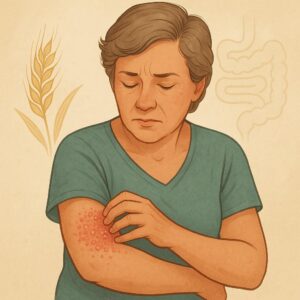Dermatitis Herpetiformis (DH) is a chronic autoimmune skin condition caused by a sensitivity to gluten—the same protein that triggers celiac disease. In DH, the immune system deposits antibodies in the skin, causing an extremely itchy, blistering rash, often in symmetrical patches on the elbows, knees, buttocks, back, or scalp.
It is considered a skin manifestation of celiac disease, and nearly everyone with DH also has gluten sensitivity in the small intestine, even if they don’t have digestive symptoms.

